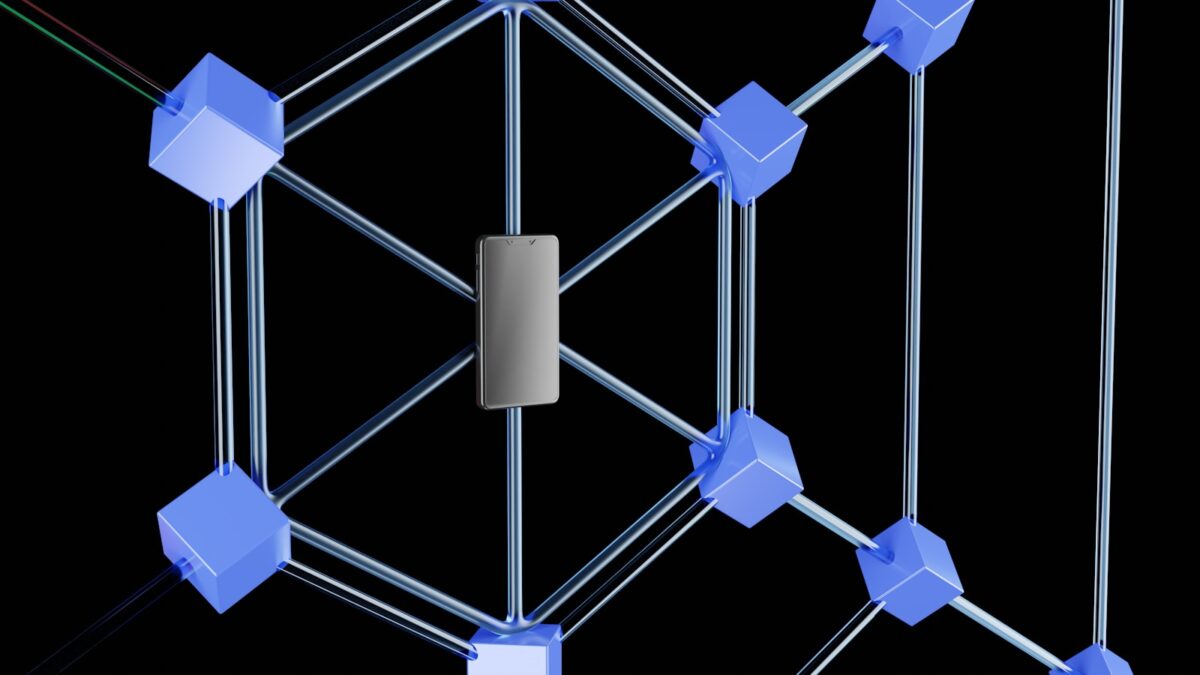
Decentralization benefits and drawbacks

Freedom in decision-making emerges as a core advantage when governance shifts away from centralized authorities. Distributing control allows participants to operate without single points of failure or authoritative bottlenecks, fostering resilience and autonomy. This structural shift enhances transparency and democratizes influence, yet it requires careful balancing to maintain coherent coordination.
The scalability of decentralized architectures offers significant improvements over traditional centralized models by enabling parallel processing and reducing congestion. However, this scalability often introduces complexity in maintaining consistent security standards across numerous nodes. Increased attack surfaces challenge the integrity of the system, demanding innovative cryptographic solutions and consensus mechanisms to safeguard data reliability.
While removing central intermediaries can reduce censorship and increase inclusivity, governance fragmentation may lead to slower decision cycles and conflicts among stakeholders. These operational drawbacks necessitate robust protocol designs that align incentives and establish clear rules without sacrificing the inherent advantages of distributed control.
Decentralization Benefits and Drawbacks
Distributing governance across multiple independent nodes enhances system resilience by eliminating single points of failure. This approach boosts security by preventing centralized attacks and censorship, granting users increased freedom over their assets and data. Control shifts away from singular entities, fostering transparency through open protocols where participants verify transactions collectively.
However, spreading authority can complicate decision-making processes, reducing efficiency in protocol upgrades or dispute resolution. Consensus mechanisms necessary for maintaining network integrity often introduce latency and limit throughput, challenging scalability in high-demand environments. For example, Bitcoin’s Proof-of-Work consensus secures the network but results in slower transaction speeds compared to centralized alternatives.
Security Implications of Distributed Control
A decentralized architecture strengthens defense against targeted cyberattacks by dispersing trust among numerous validators or miners. In Ethereum’s shift to Proof-of-Stake, the economic penalties imposed on malicious actors incentivize honest participation, enhancing overall protection. Yet, this model requires robust incentive structures; insufficient rewards or poorly designed staking parameters may expose vulnerabilities or lead to validator collusion.
Freedom realized through decentralization empowers individuals with sovereignty over private keys and financial decisions without intermediaries. Nonetheless, complete autonomy also transfers responsibility for safeguarding access credentials solely to users. Loss of private keys results in irreversible asset forfeiture–a significant drawback contrasting with recoverable accounts managed by centralized institutions.
Scalability Challenges and Governance Trade-offs
- Throughput Limitations: Distributed ledgers process transactions sequentially to maintain consensus consistency, causing bottlenecks during peak usage periods.
- Governance Complexity: Achieving agreement among diverse stakeholders slows protocol evolution and may cause forks if consensus fails.
- Resource Consumption: Some consensus algorithms demand substantial computational power or energy consumption, raising sustainability concerns.
The trade-off between decentralization level and system performance is evident when comparing Layer 1 blockchains like Solana–optimized for speed but with fewer validating nodes–to more decentralized networks such as Bitcoin that prioritize security at the cost of throughput. Hybrid approaches incorporating off-chain solutions aim to balance these aspects while retaining core benefits.
How decentralization enhances security
Distributing control across numerous independent nodes significantly raises the cost and complexity of malicious attacks, thereby reinforcing protection mechanisms within blockchain networks. In contrast to centralized systems, where a single point of failure invites targeted breaches, spreading authority diminishes the attack surface and reduces vulnerabilities. This distribution ensures no single entity can unilaterally manipulate transaction histories or system parameters without consensus from the wider network.
The autonomy granted by decentralized governance models empowers participants to verify transactions independently, increasing transparency and reducing reliance on trusted intermediaries. This freedom allows stakeholders to audit blockchain states in real time, identifying discrepancies or attempts at fraud more effectively than traditional centralized architectures. Consequently, trust is derived from cryptographic proofs and collective validation rather than institutional oversight.
Technical foundations supporting enhanced protection
Consensus algorithms such as Proof of Work (PoW) and Proof of Stake (PoS) exemplify how dispersed decision-making bolsters security by requiring majority agreement before state changes occur. For example, Bitcoin’s PoW demands significant computational effort for block creation, deterring attackers through economic infeasibility. Similarly, Ethereum 2.0’s PoS mandates staking substantial assets to propose or validate blocks; malicious behavior risks financial penalties or loss of stake.
The challenge of acquiring control over a majority share–commonly known as a 51% attack–increases exponentially with network size and node diversity. Large-scale decentralized networks thus resist coordinated takeovers more robustly than smaller or centralized counterparts. Empirical data confirms that well-distributed infrastructures face far fewer successful intrusions due to these mathematical and economic safeguards embedded in their protocols.
However, expanding node participation introduces scalability considerations affecting throughput and latency. Balancing network growth with efficient synchronization remains an active area of research aimed at maintaining high levels of safety without compromising performance. Layer-two solutions and sharding are examples where partitioning workload preserves protective qualities while enhancing transactional capacity.
In conclusion, dispersing authority mitigates risks inherent in concentrated control by fostering mutual verification among diverse actors whose incentives align toward maintaining integrity. While this approach presents challenges such as coordination overheads and resource demands, it fundamentally shifts trust paradigms from singular custodianship to distributed resilience–a critical advancement in securing future digital ecosystems.
Impact on Transaction Speed and Costs
The level of control exerted by a blockchain’s architecture directly influences transaction throughput and associated fees. Systems relying on a centralized structure typically achieve higher speeds due to streamlined governance and consensus mechanisms controlled by fewer nodes. For instance, payment networks like Visa process thousands of transactions per second with minimal latency, benefiting from centralized validation but sacrificing the autonomy that more distributed networks provide.
Conversely, networks emphasizing distributed authority prioritize security and participant freedom, which often results in increased transaction confirmation times and higher operational expenses. Bitcoin’s proof-of-work protocol exemplifies this trade-off: its decentralized nature introduces latency averaging around 10 minutes per block, while miners’ resource-intensive computations drive fees upward during congestion periods. These factors illustrate inherent compromises when shifting governance away from central entities.
Technical Factors Influencing Performance
Transaction speed depends on consensus algorithms, block sizes, and network topology. Protocols like Delegated Proof of Stake (DPoS) reduce overhead by appointing trusted validators, accelerating processing rates without relinquishing all control to a central authority. EOS achieves sub-second finality using such methods, demonstrating how partial dispersion can optimize throughput. However, reliance on elected delegates may introduce vulnerabilities in governance structures if collusion occurs.
Cost structures reflect computational demand and network incentives designed to maintain security. High decentralization fosters resistance to censorship and fraud but requires compensating participants who expend resources verifying transactions. Layer-2 solutions such as the Lightning Network illustrate efforts to mitigate these drawbacks by enabling off-chain transactions that settle periodically on the main chain, significantly lowering fees and enhancing speed while preserving the core principles of distributed control.
User control versus regulatory challenges
User sovereignty in blockchain ecosystems enhances security by minimizing third-party interference, allowing participants to maintain direct control over their digital assets. This autonomy is achieved through distributed ledger technologies that eliminate centralized intermediaries, which often introduce vulnerabilities and single points of failure. For example, protocols like Ethereum enable users to interact with smart contracts without relinquishing private keys, thus preserving freedom within a trustless environment.
However, the trade-off between user empowerment and governance introduces significant regulatory complexities. Authorities face difficulties enforcing compliance when no central authority oversees transactions or identity verification. This lack of centralized oversight complicates anti-money laundering (AML) and know-your-customer (KYC) policies, as decentralized networks operate across multiple jurisdictions simultaneously, challenging traditional legal frameworks designed for hierarchical entities.
Balancing control and oversight
Centralized platforms offer streamlined governance models where regulatory mandates can be implemented efficiently through clear accountability structures. In contrast, decentralized systems distribute decision-making power among network participants, which enhances censorship resistance but complicates enforcement mechanisms. Projects such as Polkadot incorporate on-chain governance that attempts to reconcile decentralization with structured protocol upgrades and compliance considerations by involving token holders in consensus-driven decisions.
The scalability of permissionless blockchains remains constrained by the necessity to maintain robust security while providing extensive user control. Layer-2 solutions like rollups on Ethereum demonstrate progressive approaches to improving throughput without compromising decentralization principles. These technologies reduce transaction costs and latency but also introduce new vectors for regulatory scrutiny due to their hybrid nature combining off-chain computation with on-chain finality.
Investigating governance models reveals diverse implementations impacting both user freedom and legal adaptability. Delegated Proof-of-Stake (DPoS) systems assign validation responsibilities to elected representatives, balancing efficiency against potential centralization risks that might attract stricter regulation. Conversely, fully permissionless Proof-of-Work chains prioritize maximum user autonomy at the expense of slower consensus times and increased energy consumption.
Ultimately, effective integration between user control features and regulatory frameworks requires innovative technical standards alongside international cooperation. Emerging proposals suggest embedding compliance protocols directly into smart contracts via zero-knowledge proofs or multi-signature schemes, enabling privacy-preserving audits without sacrificing security or decentralization goals. Such experimental methodologies invite further empirical study to assess practical viability in real-world deployments.
Scalability limitations in decentralized systems
The primary obstacle to scaling distributed ledger technologies lies in balancing throughput with security and autonomy. Permissionless networks, designed to maximize freedom from centralized oversight, face intrinsic performance ceilings due to consensus protocols that require widespread agreement among numerous participants. For instance, Bitcoin’s Proof-of-Work mechanism limits transaction processing speed to approximately 7 transactions per second, a figure dwarfed by centralized payment processors like Visa, which handles thousands of TPS. This bottleneck arises because every node must validate and store the entire transaction history, ensuring immutability but constraining scalability.
Attempting to increase network capacity without sacrificing protection exposes technical trade-offs. Layer 1 solutions that enlarge block size or reduce block time often compromise decentralization by favoring nodes with superior hardware capabilities, thus concentrating control. Conversely, Layer 2 approaches such as state channels or sidechains aim to offload transactions from the main chain, enhancing throughput yet introducing additional trust assumptions and complexity that can weaken overall system robustness.
Consensus mechanisms and their impact on performance
Consensus algorithms fundamentally influence a system’s capacity to scale while preserving its resistance to attacks. Byzantine Fault Tolerant (BFT) protocols used in many permissioned blockchain implementations achieve high throughput but at the expense of extensive communication overhead between validators, limiting node count and geographic distribution. Public blockchains prioritize censorship resistance and openness but incur latency penalties due to probabilistic finality models inherent in Proof-of-Work or Proof-of-Stake schemes.
An illustrative case is Ethereum’s transition from PoW to PoS with the Merge update, seeking improved efficiency without relinquishing decentralization principles. Early benchmarks suggest energy consumption has dropped significantly; however, effective TPS improvements remain moderate until future sharding implementations materialize. These developments underscore the persistent tension between expanding capacity and maintaining robust security guarantees essential for trustless environments.
*Estimates vary based on network conditions and configuration.
A critical inquiry involves how much autonomy users are willing to exchange for enhanced throughput. Centralized systems excel in processing speed through trusted intermediaries controlling infrastructure; however, this sacrifices user sovereignty over data and transaction validation. Distributed ledgers aspire to eliminate single points of failure but confront inherent limitations imposed by cryptographic consensus and peer-to-peer replication requirements.
- Data propagation delays: Larger networks encounter longer synchronization times among geographically dispersed nodes.
- Bottlenecks in storage: Maintaining full transaction histories strains node resources as chains grow indefinitely.
- Evolving attack surfaces: Scaling efforts may introduce vulnerabilities exploitable by adversaries targeting network stability or consensus integrity.
The interplay between these factors necessitates careful experimentation with hybrid architectures combining decentralized verification with selective central oversight elements. Such configurations strive to optimize transaction capacity while retaining sufficient independence from monopolistic control structures.
Pursuing scalability enhancements invites ongoing research into cryptographic primitives like zero-knowledge proofs enabling succinct transaction validation without revealing sensitive information or requiring full data replication across all participants. Exploring these innovations could redefine performance ceilings while upholding stringent protections against manipulation–thus advancing systems toward practical usability without compromising foundational ideals of self-governance embedded within distributed ledgers.
Conclusion: Overcoming Real-World Adoption Challenges in Distributed Systems
Addressing scalability remains the foremost technical barrier to expanding user bases without compromising transaction speed or network responsiveness. Layer 2 protocols and sharding experiments illustrate promising approaches, yet each introduces trade-offs affecting security guarantees and protocol complexity. Balancing these factors requires iterative testing within live environments to refine solutions that maintain robust protection against adversarial attacks while enabling throughput growth.
The tension between freedom enabled by permissionless networks and the efficiency of centralized infrastructures persists. Centralized entities often outperform decentralized counterparts in latency and user experience but at the expense of control concentration and censorship risk. Research into hybrid architectures–combining on-chain governance mechanisms with off-chain execution layers–offers a pathway to harness distributed trust while mitigating operational bottlenecks.
Key Technical Insights for Future Developments
- Security models: Protocol designs must evolve beyond proof-of-work or simplistic consensus to incorporate adaptive resilience against emerging threats such as quantum computing or coordinated validator collusion.
- Governance frameworks: Experimentation with token-weighted voting, quadratic voting, and reputation systems can improve decision-making inclusivity, reducing centralization tendencies inherent in many current models.
- Interoperability: Cross-chain communication protocols will be pivotal in avoiding siloed ecosystems, allowing users and developers to leverage diverse platforms without sacrificing decentralization principles.
The interaction between technical constraints and socio-economic incentives shapes the trajectory of distributed ledger adoption. An informed focus on incremental improvements paired with rigorous empirical validation fosters sustainable progress. This approach encourages stakeholders to engage critically with emerging tools rather than defaulting to centralized conveniences, ultimately advancing transparent, resilient networks capable of supporting broad-scale applications.


